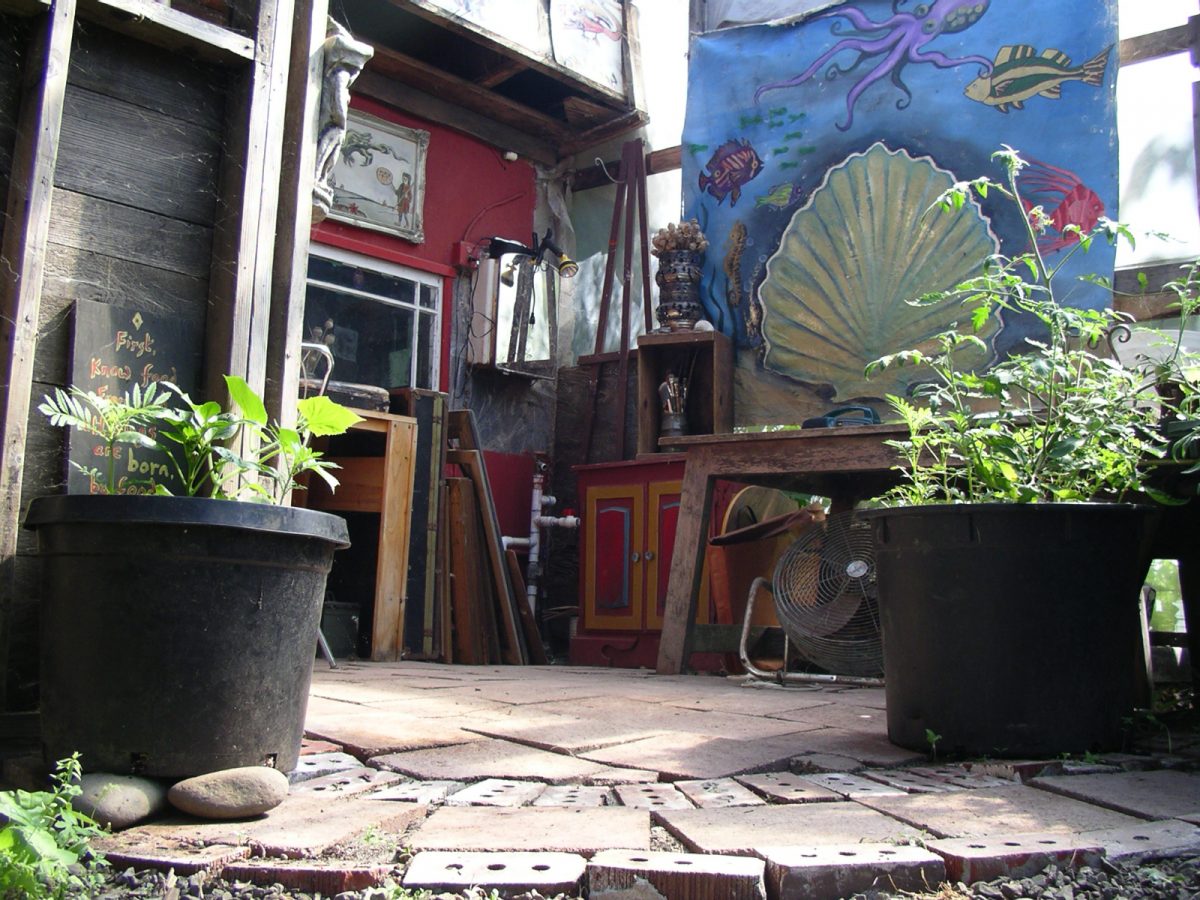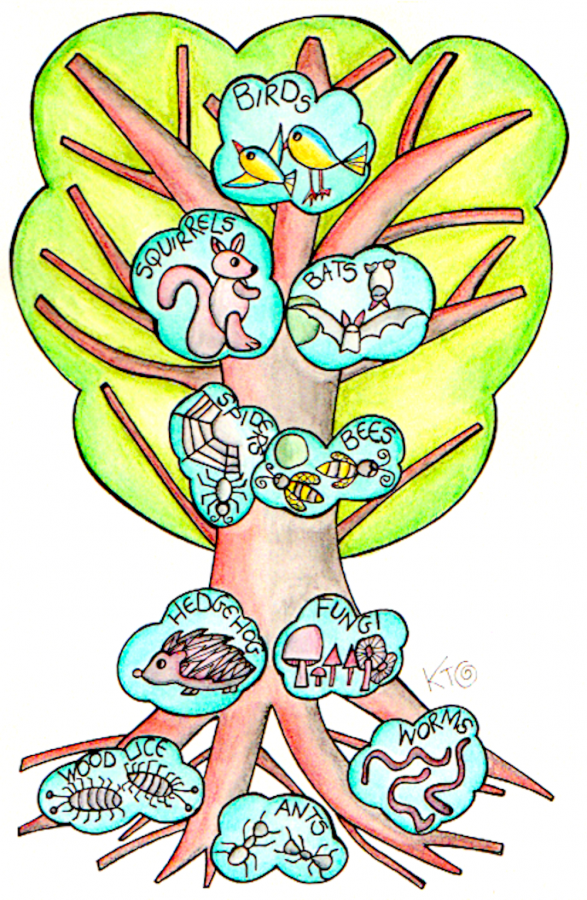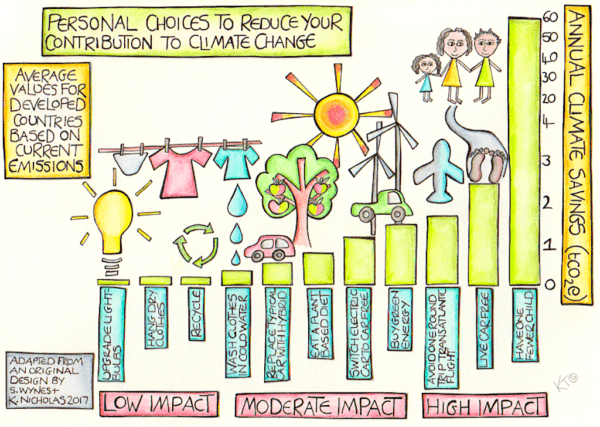Beauty is a Yield
A permaculture designer should know the difference between “resources” and “waste.”
Imagine you have a site with lots of fun components, you’re making use of plants, edges, microclimates, and design strategies, and you have a system. But…there are piles of junk everywhere. Some of it is on its way in, some might be on its way out. Some of it is earmarked for future projects, other stuff might be just sitting around waiting for somebody to have a great idea for how to use it.
That’s all fine and good, but if those piles are disorganized, out in the weather for months (or years) on end, or otherwise not actively being pulled into use in a system you have intentionally, and thoroughly designed, then sorry: that ain’t permaculture.
Permaculture is not hoarding, and it isn’t “prepping,” either. There are lots of “preppers” in the permaculture community, but know that they are not synonymous in any way.
There are merits to creating strategic, carefully stored caches to help ensure future survival; but if those resources are deteriorating in storage, and/or if there are other people/plants/permaculture systems nearby who could benefit from those resources, then you aren’t “collecting resources”–you’re hoarding. Hoarding causes ecological, social, emotional, and functional damage to the system, but if you maintain a clean, organized site, with a reasonable, realistic stash of materials and an open, functional flow of resources, your whole system will thrive.
Five Reasons to Tidy Up Your Permaculture Site
Reason #1: Ethics.
Unused surplus is waste. Seeds, plants, food, tools, vehicles, musical instruments, and many/most building materials will deteriorate in storage, often to the point of uselessness. But if they are shared as a surplus, then they invigorate the system and generate abundance.
Remember we are working with three ethics: care for people and planet, PLUS being mindful about closing the loop, paying it forward, and sharing what we create. If you look around the piles and storage spots and eddies in your flow of onsite resources, and think about tidying up as an act of service to your communities, human and otherwise, it becomes a joyful, deliberate part of the design process instead of just another list of clean-up chores.
For an example of an ecologically designed permaculture community that makes use of surplus resources and is kept absolutely clean, check out Village Homes in Davis, California. Even with so many different types of families living in such close proximity, they manage to keep everything flowing and organized. Gorgeous!
Reason #2: Relationships.
This is a big one. Especially if you live in an urban or suburban neighborhood, chances are folks can see into your site, and they do not want to look at a bunch of blue tarps and broken tools! You might even end up with a citation from your city or HOA, if you take it too far. And, while it can be really annoying when cities don’t allow people to grow food out front, it makes sense that folks wouldn’t want to live next door to a junkyard.
Building happy relationships with neighbors is about more than just not being antagonistic, though. It’s also about building a thriving system, together, and if you want to introduce your neighbors to permaculture as a way of life, you’ll convince them much more quickly if they are totally amazed when they walk into your site, rather than being startled by spiders and afraid they’ll get Tetanus from your outhouse!
You might even be able to get your neighbors to help you clean the place up! Here’s an article about neighbors using Permablitzes to help each other grow food.
And here’s a quick list, from my own blog, of rules for growing food out front.

Reason #3: Access.
Paths, roads, storage, greenhouses, garden beds…everything is easier to get to when there isn’t a bunch of unused crap in the way.
Want to learn more about this and other topics related to permaculture, sustainability, and whole-systems design? We offer a range of FREE (donations optional) online courses!
Reason #4: Health, for people, plants, and animals.
Stagnated piles of junk and organic matter create habitat for all sorts of molds, fungi, bacteria, insects, rodents, and pathogenic creatures and critters. Clean spaces give you the ability to control problems and make it easier to identify where a particular problem might be coming from. This could probably extend to the gardener’s mental health and cognitive abilities as well–too much clutter can feel chaotic and unsettling, and can lead to unclear and misinformed design decisions. Additionally, if dangerous and/or toxic materials are left scattered about, children and animals could face real dangers.
(“Junkyard Playgrounds” are a thing, btw! But they seem kinda sketchy to me)

Reason #5: Beauty and Inspiration
A clean, open space invites ideas. When it comes to permaculture landscape design, there really is no such thing as a “blank slate,” but clearing all the random chaos out of the way can really help you to recognize flows and patterns, identify edges and microclimates, and determine where you might to place components, in relationships with each other. This is so much better of an approach than having to design around a bunch of stagnant components that truly, need to go.
Also, depending on what type of character you are, maintaining spaces, even within your completed projects, that are meant to be open and empty, can help with your peace of mind and sense of tranquility. They don’t call it a “Zen garden” for nothing!
Beauty is a yield. Beauty has a purpose. Beautiful spaces help make people happy. Why work so hard to create a functional whole-system design, and then not take it all the way to FAB?!?
Why a green movement must be beautiful

Here’s an example:
In my opinion, this “storage zone” that walks the line between “useful resource cache” and “junk zone needs to be cleaned up.”
He seems to have clear intent for most of these materials, and some of them are stored in a way that helps to preserve them, so that’s all good. But I wonder if he has friends and neighbors who could put some of that junk to use more quickly, and then that creates space in his resource collection zone to save even MORE stuff from the local landfill! You can see from the background in the video that this is a large site full of plants and natural beauty, and one can’t help but wonder what percentage of his land is consumed by the junkyard zone.
Check it out:
Ok so…if you get rid of the surplus, where is it all supposed to go?
You can still save stuff from the landfill, without piling it all up in your own yard! Some ways to transform and/or redistribute stuff:
- Donate it to charity shops/thrift stores/homeless shelters.
- Sell it via FB buy/sell groups, Craigslist, yard sales, flea markets, etc.
- Give it to your neighbors! Invite them to tour your “free yard sale” and let them take what they want.
- Compost or burn biodegradable stuff, or use it to build a hügelkultur!
- Make it into art!

Wait, did you just tell me to KonMari my permaculture design project?
Pretty much, yep.
Keeping a healthy flow of resources and resisting stagnation on your permaculture site goes way beyond KonMari, though you have to admit: choosing components based on whether or not they spark joy is pretty wonderful.
Check out this graphic with her method outlined, in case you aren’t familiar with it.

So how does KonMari become permaculture? Try going through your permaculture site, zone by zone..
- Start with Zone 0! Purge all the extra crap from your bedroom, your closet, your bathroom. Purge toxic people from your life and toxic behavior from your day.
- Blending into Zones 1-2: Clean and organize every corner of every space in your home and garden that you visit at least twice a week. (See how amazing this feels already?!?)
- Take a break before getting to the outer zones. Drop off the charity shop items, have a burn pile, host a yard sale, or do whatever else you need to do to get that stuff OUT of your life and OFF of your site.
- Then, move on to zones 3-5, and do them right. Don’t skip the weird creepy corner at the back of the basement. Don’t skip that nasty old compost pile, either! Biological materials can be “junk” too, if they’re just festering there.
Whip it ALL into shape, and you will be amazed at how much more clear and possible moving forward with your whole system permaculture design project becomes.





